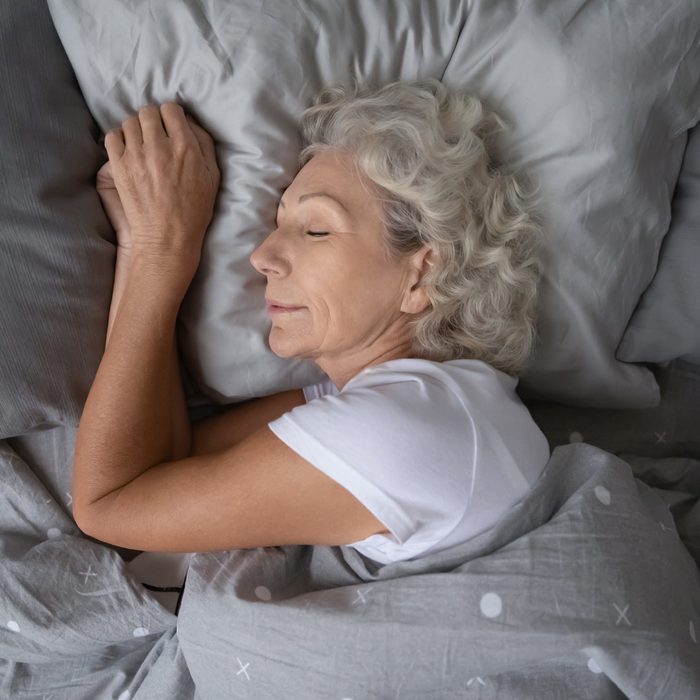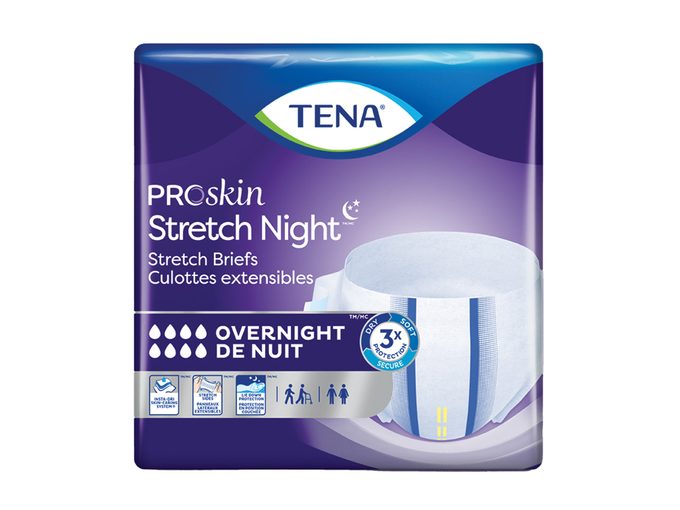Urinary Incontinence Affects So Many Women in So Many Ways. Here’s How to Find Some Relief

An expert shares tips on how to stay comfortable when experiencing incontinence.
Erica West* was about three months postpartum with her first child when she had her first major pee leak in public. “I was putting the baby seat into the car, in a crowded grocery store parking lot, and I just could not hold it—at all,” says the 34-year-old mom of two from Ottawa. “I full-on peed my pants right there in front of everybody and it was awful.”
West is not alone. In the most recent Canadian Urinary Bladder Survey, 58 percent of women—across the survey’s age groups—reported dealing with a bladder issue. Stress incontinence (the kind that makes you pee when you laugh, jump or lift a baby in their heavy car seat, for example) and urge incontinence (the kind that seemingly gives you no warning when you have to go) are the two most common types. Pregnancy, childbirth, hormonal changes, genetics and aging (which comes with a slackening of our muscles and tissues) can all cause incontinence.
For the first year of her daughter’s life, West says she had no control of her bladder. It took many months of pelvic floor physiotherapy to help her regain that control and get back to some semblance of normal (though she still leaks occasionally). And, in the meantime, incontinence impacted her life in several surprising ways.
Skin irritation
“I wore pads and pantyliners way beyond when the postpartum bleeding stopped because I knew I didn’t have my pelvic floor under control. But I have sensitive skin and irritation was a problem for me,” says West. “When I was wearing pads daily, I had a lot of chafing.”
For people who experience frequent pee leaks, it’s common to have irritation around the outside of the vagina, says Monica Li, a dermatologist and clinical instructor in the department of dermatology and skin science at the University of British Columbia. Incontinence-associated dermatitis signals a breach in the skin barrier, which can be caused by the excess moisture, exposure to bacteria from the urine and pads rubbing on the skin’s surface. “These factors all contribute to skin inflammation, leading to a range of signs and symptoms, from redness to itching or even sloughing in more severe cases,” says Li.
To prevent rashes and chafing, and to deal with already irritated skin, Li recommends keeping the area clean by washing daily with a gentle pH-balanced cleanser, patting dry and then applying a petrolatum-based cream or an emollient balm (like a baby diaper rash cream) to seal in moisture and create a protective layer. Using an incontinence product, like a pad or absorbent underwear—as opposed to something designed for periods, like a panty liner—will do a better job of absorbing fluid and wicking away moisture. Incontinence pads should be changed as soon as they are wet. It’s also a good idea to go without whenever you can, like when you’re at home and have quick and easy access to a washroom.
Wardrobe malfunctions (and super quick changes!)
“Women can be nervous about leaking, even through an incontinence product, and so they end up only wearing black, or patterns, but no white or jeans, or anything tight on the bottom,” says Magali Robert, a urogynecologist and head of the Calgary Pelvic Floor Clinic. “And then if they are carrying around extra clothes and incontinence products, too—well, they always have a big bag or purse to carry, which can be really inconvenient.”
“For the first year, I did not leave the house without an extra set of clothes—it was that bad,” says West. She also felt the need to change what types of clothes she wore. “I stopped wearing my favourite light green pants after I went back to work,” she says. “One time, we had coffees during a meeting and I knew I had to go, so I was afraid to stand up. After that it was always dark bottoms.”
Other vaginal issues
“Leaking is not going to give you a bladder infection,” says Robert. “But you might think it is because leaking increases with age and urinary tract infections also tend to increase with age, especially around perimenopause and menopause.” So, she says, women often experience both. And while the two conditions aren’t directly related, they can both be helped by vaginal estrogen, so they are frequently treated in tandem.
Lifestyle modifications
“The impact socially, for me, was major—I peed in the grocery store more than once,” says West. Many women find themselves planning their outings and other errands around bathroom breaks (or the nearest coffee shop with a clean washroom).
Some women avoid social settings where they might feel trapped, like a two-hour-long movie date, for example, or a workout that could cause problems (hello, hiking down hills or any type of bouncing). Some will avoid running around with their kids, or even going on vacation, due to the stress of not knowing what the bathroom situation will be.
And incontinence can affect a woman’s life in even more intimate ways, too. “Leaking with intercourse is actually quite common,” says Robert. “Almost 50 percent of women who leak will also leak with sexual activity.” That could account for 10 to 15 percent of women who are sexually active—and if we’re still shy about sharing that we pee when we laugh, it’s no wonder this part of the problem remains undiscussed.
“The most important thing is to see a doctor, talk to someone—because there are things that can be done,” says Robert. Depending on the type of incontinence, pelvic floor and bladder training could be required. There are also medications, lasers, injections and surgery options.
Too many women think they have to live with pee leaks—and the ripple effect of problems they create—but for about 90 percent, the issue can be better managed. “Don’t wait until you can’t stand it anymore to ask for help,” says Robert.
*Name has been changed to protect privacy.

From Our Partners
Caring for a loved one who has urinary incontinence
Being a caregiver isn’t easy. Throw in a full-time job (for 60 per cent of Canadian caregivers) and a household with kids (for one third) and you’re left with a packed schedule and zero free time. But your needs matter just as much as everyone around you, and it’s crucial that you make space for yourself. These tips can help.
Give yourself permission to take YOU time.
Taking time to care for your own physical and emotional health isn’t selfish, it’s necessary. If you’re irritable or rundown, you won’t be much good to anyone. Find something just for you—like a walk or a bath—and make it a priority every day.
Ask for help.
Think about what would make a difference in your schedule. Would it help if another parent could carpool? If your child unloaded the dishwasher every day? If you could have flexible work hours one day each week? It never hurts to ask.
Find the right support products.
Make a stressful job easier by choosing bladder incontinence products that keep the skin dry, clean and protected. Cleanse with TENA ProSkin Cleansing Cream or Wipes—no rinsing required!—and protect fragile skin with ProSkin Barrier Cream. You can also opt for briefs with tabs like TENA ProSkin Unisex Briefs for easier changes.
Visit tena.ca to learn more.





